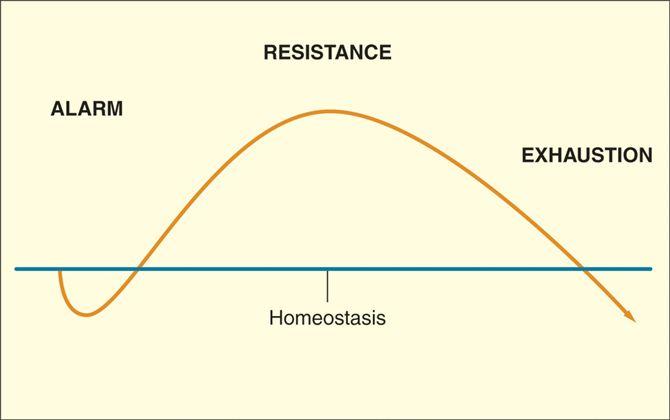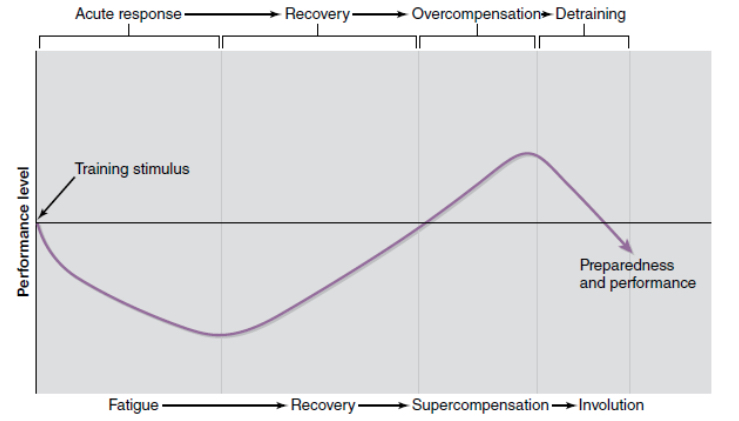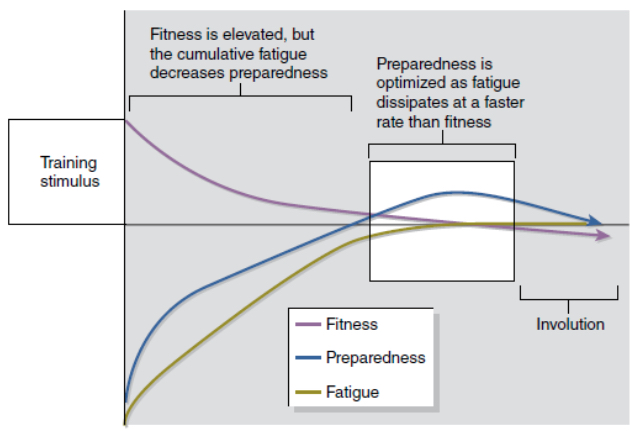The essentials of periodisation include: the stimulation of physiological adaptations, managing fatigue and ensuring the adaptations improve performance. This is done through the sequencing and structuring of a periodised training plan. Peak performance only lasts 7-14 days and needs to occur at the optimum time for competition and performance.
There are three theories that have been used to develop periodisation plans and help to understand how to balance the essentials of periodisation: general adaptation syndrome, stimulus-fatigue-recovery-adaptation theory, and the fitness–fatigue paradigm.
General Adaptation Syndrome
The General Adaptation Syndrome basically means that any novel, new, or more intense stress than previously applied (e.g., lifting a heavier training load), cause an initial response characterised by fatigue, soreness, stiffness, or reduction in energy (alarm phase). These then reduce performance. This initial response may last hours, days or weeks depending on the stress. The body then shifts to the resistance phase, where it returns to normal function. If the stress is appropriate further physiological adaptation can occur, increasing performance.
However, if the stress is applied for to long, the exhaustion phase occurs, also known as overtraining. This can result from excessive loading, monotonous training, and overly varied training. This phase of the General Adaptation Syndrome can be avoided through proper planning and management (periodisation) of training stress.
Stimulus-Fatigue-Recovery-Adaptation Theory
An extension of the General Adaptation Syndrome, the stimulus-fatigue-recovery-adaptation theory suggests that training stimuli produce a general response influenced by the overall workload of the training stressor. The bigger the workload the longer the recovery and adaptation take to occur. Training sessions then aim to reoccur during the overcompensation (adaptions) phase and build upon each other. If training stops for too long, detraining will occur bringing the athlete back to pre-training functional capacity.
Manipulation of the training workloads allows the coach to manage the athlete’s overall fatigue, rate of recovery, and adaptions to training.
Fitness–Fatigue Paradigm
This paradigm basically says that training causes both an increase in fitness and an increase in fatigue. The two are added together and if there is more fatigue than fitness then performance decreases, where as if there is more fitness than fatigue performance increases. The larger the training workload the larger the fitness and fatigue effects. Here fitness is essentially adaptations, and takes longer to wear off or dissipate than fatigue. Each training session thus produces its own fitness fatigue paradigm and the aim is to accumulate the larger lasting fitness or adaptations.
In the table, preparedness is performance capacity.
For HSC PDHPE these theories or simply one theory can be used to discuss the essentials of periodisation as you justify periodisation charts.
Sources
Haff & Triplett (2016). Essentials of Strength Training and Conditioning-4th Edition, Human Kinetics.
https://www.nsca.com/education/articles/central_concepts_related_to_periodization/









